It was a Sunday night and I was cooking dinner in the communal kitchen at IMAP when Kristina and her sister, Andrea, two young Kaqchikel women from the community, came running in. Trembling and laughing at the same time, they began talking a kilometer a minute about how they were being followed by a large, black cat from the mountains. Kristina said she has seen mountain cats before, but they normally run in fear once spotted. Not this one. Two days later, she was followed again by the same large, fearless cat. Much like the Diné (Navajo) of the Southwestern U.S. have skinwalkers, the Kaqchikel have xaguas– people with the power to transform into animals, often for malicious purposes. Perhaps this young, beautiful woman with an outstanding smile and kind soul had broken a boy’s heart at school. And now, he was following her in the form of a large black cat? That was the only explanation we were able to come up with. Yet, it remains a mystery.
Guatemala has recently presented me with many mysteries. One in particular has plagued me each morning and has to do with the creatures who find my room as relaxing and homey as I do. Besides the spiders of various shapes and sizes, the blood-thirsty mosquitos, the buzzing beetles, the sneaky, black scorpions, the occasional rat or bird scuttling in the rafters, the iridescent lizards, and the ginormous toads croaking by the door, something else- some mysterious creature- is also cohabiting with me. How do I know this? For the last week, upon waking from wonderful dreams of seeing old friends and playing soccer, I have found a large pile of black and red, dead ants. Despite sweeping them away each morning, they return the next day. Crumpled up, as if their last moments were spent in agony, they pile in the exact same spot, with the exact same ferocity. But much like Kristina, I immediately think of a local legend to explain it. The chupacabra! This is a creature that reportedly has leathery skin and sharp spines running down its back. It kills livestock and sucks them dry of their blood before leaving the bodies behind. Its name literally means goat sucker, and it is kind of like the bigfoot of Latin America. Yet, back to my point, I don’t think there is a chupacabra living in my ceiling, because I have yet to find a dead goat. Instead, something even more mysterious and foreign -probably because I made it up – the chupaormiga! (which literally means the ant sucker).
Being the mycophile I am, I prefer to think this mysterious being is not a figment of my nightmares but a type of parasitic fungus known as Cordyceps. There are over 600 known varieties of Cordyceps, and many more unknown, which fruit mushrooms from other fungi and insects, such as catepillars, ants, and beetles. One specific type of ant fungus, Cordyceps curculionum, begins as a floating spore which lands on and attaches to its host. The spore germinates and the mycelium begins to feed on the ant from the inside out. Going about its normal life, the ant one day will suddenly decide (being influenced by the fungi) to climb to the top of a tree. Once it reaches a desired height, it chomps down on a leaf and remains there until it dies. As a result, a mushroom fruits from its body and releases its spores throughout the forest canopy. One of the more commonly known types of Cordyceps, is C. sinensis. This grows on the caterpillars of a moth in parts of China and Nepal. Believe it or not, this mushroom is widely sought after for its medicinal properties, which include being anti-bacterial, anti-oxidant, anti-tumor, anti-viral, lowering blood pressure and cholesterol, a blood sugar moderator, enhancing the cardio-vascular and immune systems, a kidney, liver, and nerve tonic, strengthening the lungs and respiratory system, a stress reducer, and a sexual potentiator. It also provides a large portion of income for the rural folk who gather it. Whether its a chupaormiga, a zombie ant fungus, or something else, I may never know. I guess this is another mystery that will go unsolved.
A dirty mystery that extends beyond Guatemala and into each of our homes, is what happens to the trash we produce. So often, food, packaging, clothing, and various household appliances are discarded without a second thought. However, here at IMAP, there is no magical dump truck to carry away what we no longer deem valuable. For that reason, Rebeka and I decided to sort out the problem, literally. We began by tackling the giant bin of trash that accumulated over the last month. We sorted items into various bins labeled for paper products, glass, aluminum, plastic bags, and plastic bottles. IMAP also has a compost area, known as the Circle of Bananas, where food waste is thrown and the kitchen sink drains to. The banana trees that line the compost take up the excess water, and the leaves that fall help supplement the compost pile. Permaculture in practice.
Next, we designed a mural which explains how to reduce trash at IMAP by not even bringing it in the first place. The mural suggests using reusable water bottles, bringing your own bags to the market, reusing silverware and dishes, utilizing rechargeable batteries, and using cloth diapers. It also talks about buying local, natural food items in bulk, fixing things that are broken, and being creative with garbage, like making “eco-bricks”! These are made by stuffing the plastic bottles full of the plastic bags and other little bits of trash. Once stuffed full, these eco-bricks are used around IMAP, much like a regular brick, for construction purposes. All of these suggestions are wonderful things each of us can do to reduce our trash at home.
Yet, there always seems to be something that cannot be reused or recycled. For that reason Sarah, Jess, Nick (some new volunteers here from New York), Erick and I took a field trip to the municipal dump outside of San Lucas Tolimán. As the pickup pulled up to the entrance of the land-fill, we saw mounds of smoke rising into the sky. My first thought was that they burn the trash, but as we entered the compound I realized that the extremely dense mountains of garbage, in combination with the beating sun, cause the trash to spontaneously burst into flames. The smell of burning plastic and other debris is enough to make a person slump over and gag. Not to mention, it leaves you with a horrendous headache and a nasty film covering your body. Even worse is the fact that no matter how much we reduce our own personal waste, municipal waste only accounts for 3% of all waste. The other 97% of garbage is created by corporations, extraction industries, and our dependency on the industrial system. My answer to this problem? Besides creating a new, more sustainable system for living is to align with mushrooms to help heal the planet. “The enzymes created by certain mushrooms to digest organic matter have been shown to break chemical bonds, found in petroleum products, herbicides, pesticides, dioxins, PCBs, DDT, Agent Orange, and munitions such as TNT” (Radical Mycology – an SLF Primer). There is even a mushroom that was discovered in the Amazon that feeds on plastic, and mushrooms discovered in a Chernobyl nuclear reactor that feeds on radiation! Fungi also exemplify many of the ways humans should integrate with each other and the natural world. By directly transforming and improving the land, we can begin to counter negative beliefs about our abilities to make a difference and become empowered in the process. And through learning about and working with mycelium, we can realize the strength found in decentralized, collaborative systems. This is one mystery that, together, we can solve. For more information of how to use fungi in action, check out www.radicalmycology.wordpress.com.
Another common, yet not so easy to solve, mystery that affects the Mayans in Guatemala is how to produce enough income and food to feed their families. In Pachitulul, most of the fertile land is being swallowed up by the rising lake waters, cutting off their access to their livelihood. This has been especially evident since the lake has risen over five meters since 2009! The cause of this effect is best explained as having to do with volcanic activity that defines the region, and has been recorded as a cyclical rise and fall of water since the 1600s. The fertile, flat land that does remain is owned by wealthy people whose vacation homes dot the shoreline and restrict access to the locals.
To help solve this mystery, I decided to give a workshop on growing oyster mushrooms (Pleurotus ostreatus). Gathering the materials ended up being easier and cheaper than in Oregon (where I have done much of my mushroom cultivation). First we needed to find the substrate- the medium on which the mycelium will grow. Tipped off by the waiter at a local restaurant, Michelle and I went on a scavenger hunt until we ended up at the house of a woman in San Lucas Tolimán. There she had a sack full of xilotes, corn cobs with the corn taken off, which she would use as firewood. But like most people in Guatemala, who would give you the shirt off their back even though they might not have another to put on, the kind woman gave us two bags full of xilotes for free. After, we went to a few hardware stores to gather the remaining materials, plastic bags to grow the mushrooms in (about 50 cents total) and powdered lime, the chemical not the fruit (about 25 cents).
The first step of the process was to cut the corn cobs into small chunks with a machete. Next we put them into a porous sack and into a bucket. I added the powdered lime at a ratio of half a pound of lime to 25 lbs of corncob chunks, and filled the bucket with water. The lime works as a disinfectant, and after soaking for 24 hours, I took the bag out and hung it in a tree to drain. Next we had to find some mycelium, which is the actual organism- the mushroom being just the reproductive, delicious, fruiting body. This involved a weekend trip to another town on the lake called San Andrés Semetebaj. There, a nice gentleman named Don Juan, cultivates mushroom spawn, and sold me a pound of oyster mycelium for less than four dollars. In San Andrés Semetebaj there are several mushroom growing projects. Some are funded by a local Guatemalan university (where we got our mycelium from), some funded by Wal-mart, and some run by individuals, but all attempting to better the livelihood of the people.
Upon returning to IMAP with mycelium in hand, the workshop began. To hook in the participants, I cooked up some delicious oyster mushrooms in olive oil and salt. Everyone loved them. Then I gave a short presentation about the mushroom lifecycle, the environmental and medicinal benefits of oyster mushrooms, and an overview of the growing process. After blabbering for a short while, we got our hands dirty, or should I say clean, and filled plastic bags with the disinfected corn cobs and mycelium. Now the bags are hanging up in a dark area, waiting for the mycelium to grow throughout the bag. In about a month, once the bags are completely white with mycelium, they will perforate the bags and wait for them to fruit. From this method, we are hoping to get three to four flushes, or harvests, of beautiful oyster mushrooms! Once the bags are done fruiting, IMAP plans to discard the mycelium in their gardens to help the various plants growing here. Feeding people + teaching skills + a new source of income + helping the environment = solving part of the mystery.
The days in between being a sleuth have been filled with gardening, watering, seed saving, and chatting with the locals. One thing I can be sure is not a mystery, is how much I am falling in love with these people and this place.


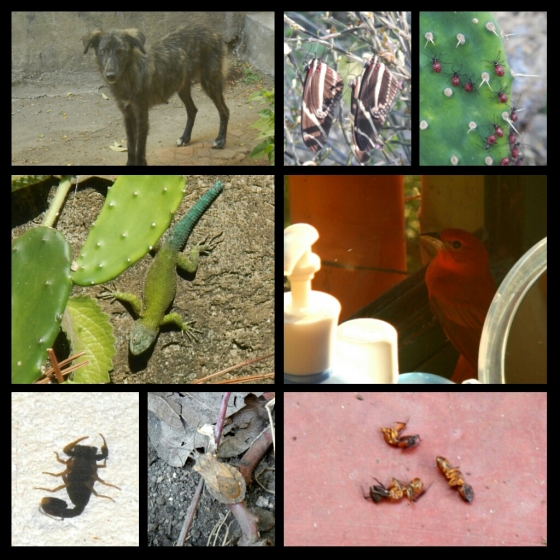
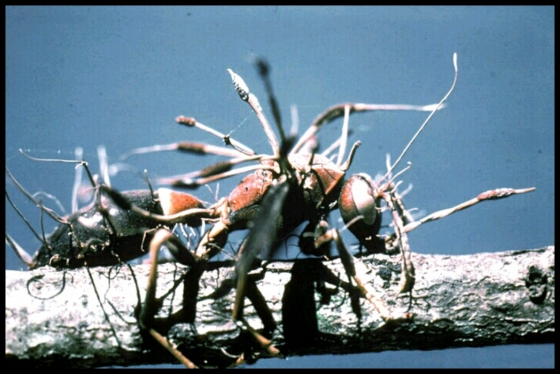
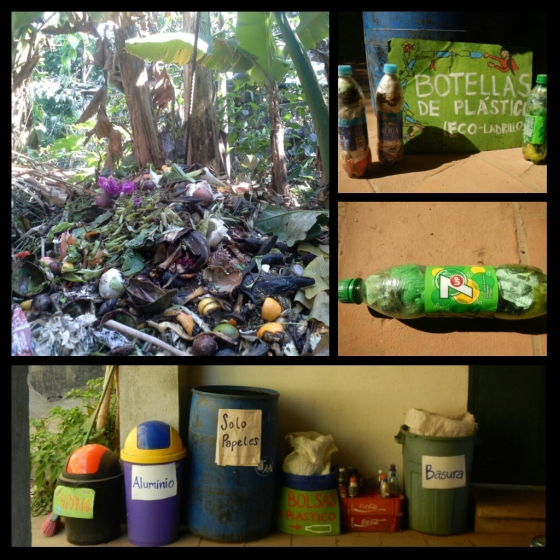
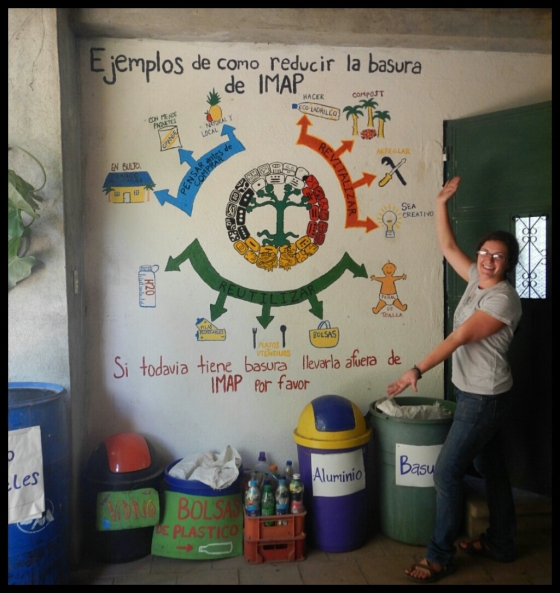
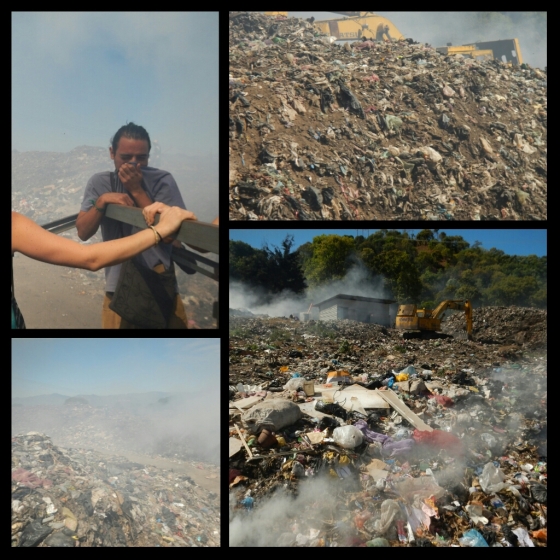
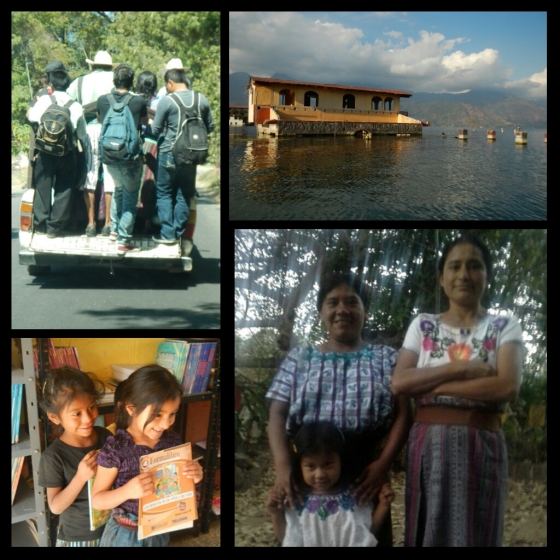
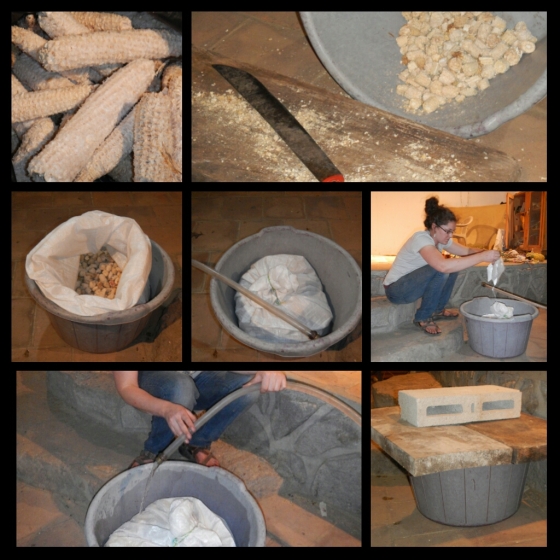
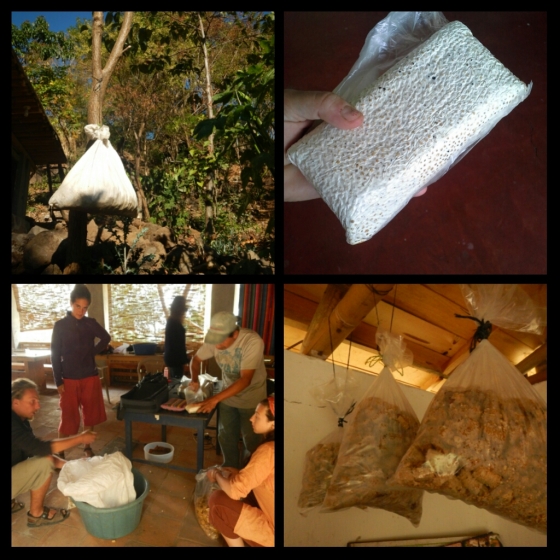
Hey, I don’t know how else to get ahold of you…I left my book on the top bunk. Give it to Angela and Nate?
Hey Jess, Sure can do! Safe travels and hasta luego!
Great post!!! I am so pumped to read about all the ways you are helping to make Guatemala a healthier place to live. Your application of mycology is fantastic! Way to go Lady…keep up the amazing work!